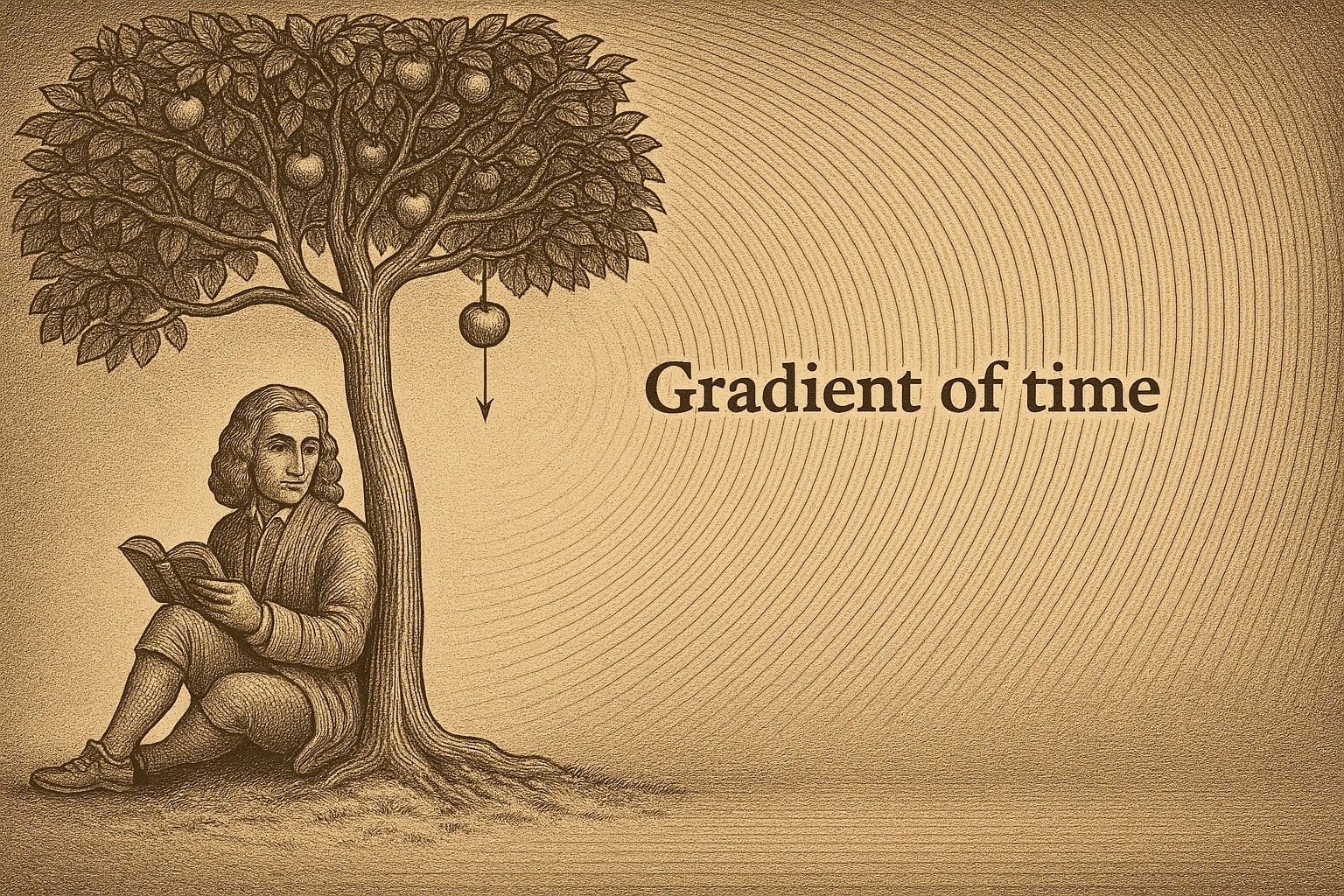Imagine the universe as an ocean of flowing time — a continuous, dynamic medium through which everything moves. Time is not something that flows around matter, time itself is the fluid that evolves into matter and energy.
In this view, what we call gravity is simply the circulation pattern of this temporal fluid. Massive bodies like Earth, the Sun, or galaxies are regions where the Timeflow field becomes denser and more organized — forming stable vortices and currents.
When an apple falls from a tree, it isn’t being pulled by an invisible force. It’s being drawn into the existing stream of Timeflow, following the local current that converges toward Earth. Everything — light, matter, and energy — drifts along these gradients of time, just as leaves and waves follow the motion of water.
The Earth doesn’t “warp” something external called spacetime — it simply shapes the motion of time itself. Every mass, every photon, is a whirl or ripple within this same underlying field. Gravity, then, is not a separate force acting in space — it is the hydrodynamics of Timeflow.
Objects move the way they do because they are part of the current, not apart from it.
The apple, the Earth, and the light that passes between them are all made of the same substance: the fluid of time.
This view of gravity also connects deeply with why time flows—the competition between order and disorder. Gravity is the physical manifestation of the "Drive for Order."
By drawing energy together into the wells of slow time, gravity concentrates and synchronizes the underlying Timeons. It is the mechanism by which the universe builds structure—forming galaxies, stars, and planets. This concentration of order is necessary to balance the universe's inherent drive toward chaos (entropy).
Gravity, therefore, is not just a force that governs motion; it is the fundamental organizing principle of the cosmos, emerging directly from the dynamic geometry of time.
